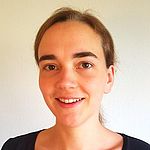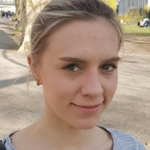The aim of this project is two-fold. The volume preserving mean curvature flow shrinks the area of a surface as fast as possible but keeps the enclosed volume fixed. Based on previous work and recent development in the field we would like to understand the Neumann free boundary setting inside of a convex domain for curves. We are particularly interested whether it is possible to exclude singularities. Furthermore, we would like to study the connection of limits of the flow without singularities to the solution of the relative isoperimetric problem.
The second part of this project is connected to the Willmore functional. For example, it is interesting to know how many ways there are to deform a Willmore surface in a way that decreases the Willmore energy. This is a Morse theoretical questions. Recently, the Morse Index of Willmore spheres that arise as inverted complete minimal surface with embedded planar ends was computed. Amongst other things, several asymptotic geometric properties of the minimal surface at infinity have consequences for Morse theoretical questions. We would like to deepen the study of these connections. Furthermore, we are interested in related questions to the Sphere Eversion. In particular, we want to understand asymptotic stability of non-compact limit surfaces for singularities of the Willmore flow.
Publications
We give a topological classification of Lawson's bipolar minimal surfaces corresponding to his ξ- and η-family. Therefrom we deduce upper as well as lower bounds on the area of these surfaces, and find that they are not embedded.
Related project(s):
25The Willmore energy of degenerating surfaces and singularities of geometric flows67Asymptotics of singularities and deformations
We obtain estimates on nonlocal quantities appearing in the Volume Preserving Mean Curvature Flow (VPMCF) in the closed, Euclidean setting. As a result we demonstrate that blowups of finite time singularities of VPMCF are ancient solutions to Mean Curvature Flow (MCF), prove that monotonicity methods may always be applied at finite times and obtain information on the asymptotics of the flow.
Related project(s):
25The Willmore energy of degenerating surfaces and singularities of geometric flows67Asymptotics of singularities and deformations
We demonstrate that the property of being Alexandrov immersed is preserved along mean curvature flow. Furthermore, we demonstrate that mean curvature flow techniques for mean convex embedded flows such as noncollapsing and gradient estimates also hold in this setting. We also indicate the necessary modifications to the work of Brendle-Huisken to allow for mean curvature flow with surgery for the Alexandrov immersed, 2-dimensional setting.
Related project(s):
25The Willmore energy of degenerating surfaces and singularities of geometric flows67Asymptotics of singularities and deformations
We provide a posteriori error estimates in the energy norm for temporal semi-discretisations of wave maps into spheres that are based on the angular momentum formulation. Our analysis is based on novel weak-strong stability estimates which we combine with suitable reconstructions of the numerical solution. We present time-adaptive numerical simulations based on the a posteriori error estimators for solutions involving blow-up.
Related project(s):
67Asymptotics of singularities and deformations
Team Members
Prof. Dr. Elena Mäder-Baumdicker
Project leader
Technische Universität Darmstadt
maeder-baumdicker(at)mathematik.tu-darmstadt.de
M.Sc. Melanie Rothe
Doctoral student
Technische Universität Darmstadt
rothe(at)mathematik.tu-darmstadt.de



